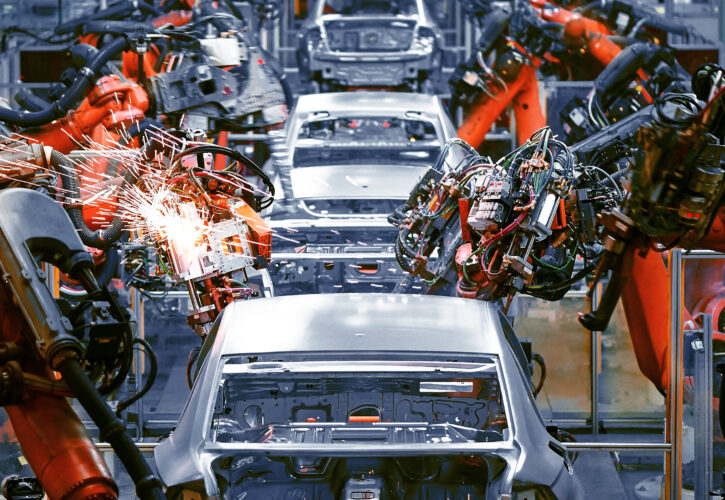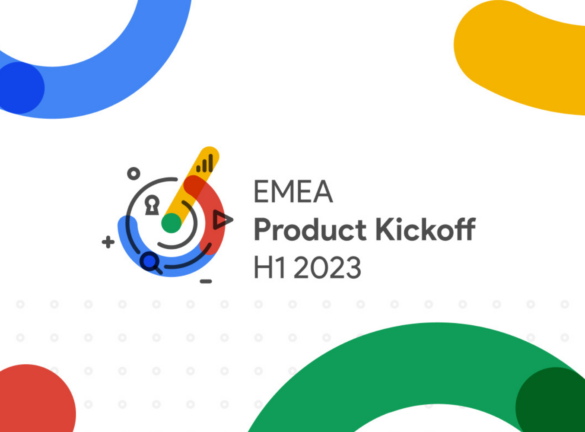
Talking shop: The iAB’s Automotive Seminar
Knowing your audience in the automotive industry is particularly important as the majority in fact have no prior contact before entering a dealership: 70% to be exact. This means that the other 30% must be convinced, and even then, it is difficult to pinpoint particular behaviours and paths that will lead to someone purchasing a vehicle. Only a third of car buyers will visit the manufacturer websites before purchase. With stats such as these, it means that automotive dealerships are having to measure the success of their activity based upon things that are unlikely to happen, making it even more difficult to define success and understand their target market.
Digital Data & Machine Learning Helps Improve the Efficiency of TV Ad Delivery and demonstrate its impact on foot traffic
As consumer behaviours are starting to change and foot traffic to dealerships becomes key, automotive brands are starting to analyse the impact that big beautiful brand TV ads are having on the number of forecourt visits. In a world as connected as ours, where digital data and location led insight help us to understand more and more about real world behaviour, Mobsta and Toyota wanted to know whether location data can help ensure that automotive brands can reach the right people. They also used this data in order to understand the true effects of their campaigns and therefore gain more accurate measurement of campaign performance as well as measuring actual offline behaviour.
In order to gain more accurate measurements, Mobsta and Toyota utilised density-based spatial clustering to assign certain targeted postcodes to nearby dealerships. Off the back of this, any impressions that were served to these postcodes were then assigned to their respective cluster and dealership. This allowed Mobsta and Toyota to gain greater insight into the results from the campaign. Overall, there was a 7.65% uplift in visits to Toyota dealerships and using density-based special clustering, they could see that the areas that had been targeted with Addressable TV, there has been an average uplift of 16.77%.
State of the Alternative Fuel Vehicles Market 2020 Study Results
As we begin to move away from petrol and diesel fuel, the demand for alternative fuel vehicles is only going to increase. Encore’s 2020 study aimed to identify the latest consumer opinion towards Electric Vehicles and Hybrids and the key barriers currently preventing the automotive industry going to mass market.
Encore’s 2020 study, following on from the success of their 2019 study, identifies the right target audience as well as identifying the crucial gaps in consumer knowledge that are currently causing consumers to be reluctant when it comes to purchasing an electric vehicle or a hybrid. Overall, the study uncovered several overarching themes regarding current attitudes towards electric and hybrid vehicles.
As it stands, the genuinely addressable market remains very small although awareness of alternative fuel vehicles is slowly growing. The issue is that the interest in electric vehicles is remaining the same and this is due to several different reasons. The belief in the technology is gradually improving, but previous reservations that people had about the technology are now being replaced by a growth in lifestyle-based reservations. Another barrier to reaching a wider mass-market audience is the belief that the technology is not suited to rural areas. This urban centric perception of electric vehicles means that people living in villages and rural areas aren’t considering electric vehicles as a long-term solution, therefore, preventing automotive brands from reaching a wider audience. A lack of real-world use cases means that automotive brands are struggling to prove to people that electric vehicles can work for consumers and fit into their lifestyle.
Automotivation: Digital storytelling for the car industry
Lucia Mastromauro (VP of Global Agency Development and Western Europe Sales) from Adform, discussed how automotive brands can use advertising technology to target consumers with personalised, data-driven messaging. She spoke about how technology can take both product and consumer information and use this information to create the right message for the right user. Mastromauro went on to discuss how ads can use this information to change and adapt depending on how a user interacts with the ad and how this leads to more advanced and sophisticated storytelling.
Data Driven Motoring – the future view of automotive partnership marketing
Bruce Clayton (Co-Founder of Optimus Performance Marketing) and Smita Pillai (Senior Customer Success Manager at Impact) presented on how brand partnerships are emerging as the next major growth category and an effective form of marketing partly due to the fact that 84% of millennials do not trust traditional advertising. Partnerships are providing a viable alternative to traditional advertising and allowing brands to reach new audiences that were previously inaccessible.
Kwik Fit and Optimus have been working together for over 6 years in a partnership that has seen both brands grow. The primary focus of the partnership strategy is to work closely with large publishers that; maximise reach, showcase brand and offers, are reactive and flexible and are able to influence the point of purchase behaviour of consumers. The partnership has been a great success for Kwik Fit. They’ve experienced a 27% increase in tyre sales volume, increased revenue year-on-year by 7% and increased year-on-year ROAS by 6.3%.
As consumers become increasingly indifferent to traditional marketing, Kwik Fit’s partnership demonstrates the potential reach and impact that brand partnerships can have, providing a viable alternative to traditional marketing.
Content that Connects: How understanding content can fuel growth
The final talk of the seminar was presented by Jergan Callebaut (Head of Psychology) and Emma Cottenham (Software Engineer) from Datasine about how a greater understanding of content can help fuel growth and performance.
Datasine use a process called content atomisation to identify key engagement-driving content elements using AI. By using content atomisation, Datasine can turn creative content into data which then feeds into future content creation. In a recent campaign, they were able to increase CTR on an advert by 22% just by making small changes to the initial content. By analysing their creative content, automotive brands can personalise the way in which they are communicating with their target audiences. This increased personalisation presents new opportunities for engagement with consumers.
Driving it home
The use of AI within digital marketing is only going to become more common and will make digital marketing more efficient. Atomisation of content and automation will allow automotive brands to save labour on production and the personalisation of content should lead to increases in performance and sales in the long run. For automotive brands seeking greater reach and more effective content, appealing to the individual consumer is key and will form the basis of campaigns moving forward.
Thank you for reading this blog! For more information about events at the iAB head to their website or check out our Paid Search Glossary, to get up to speed on the latest relevant terms for search.






